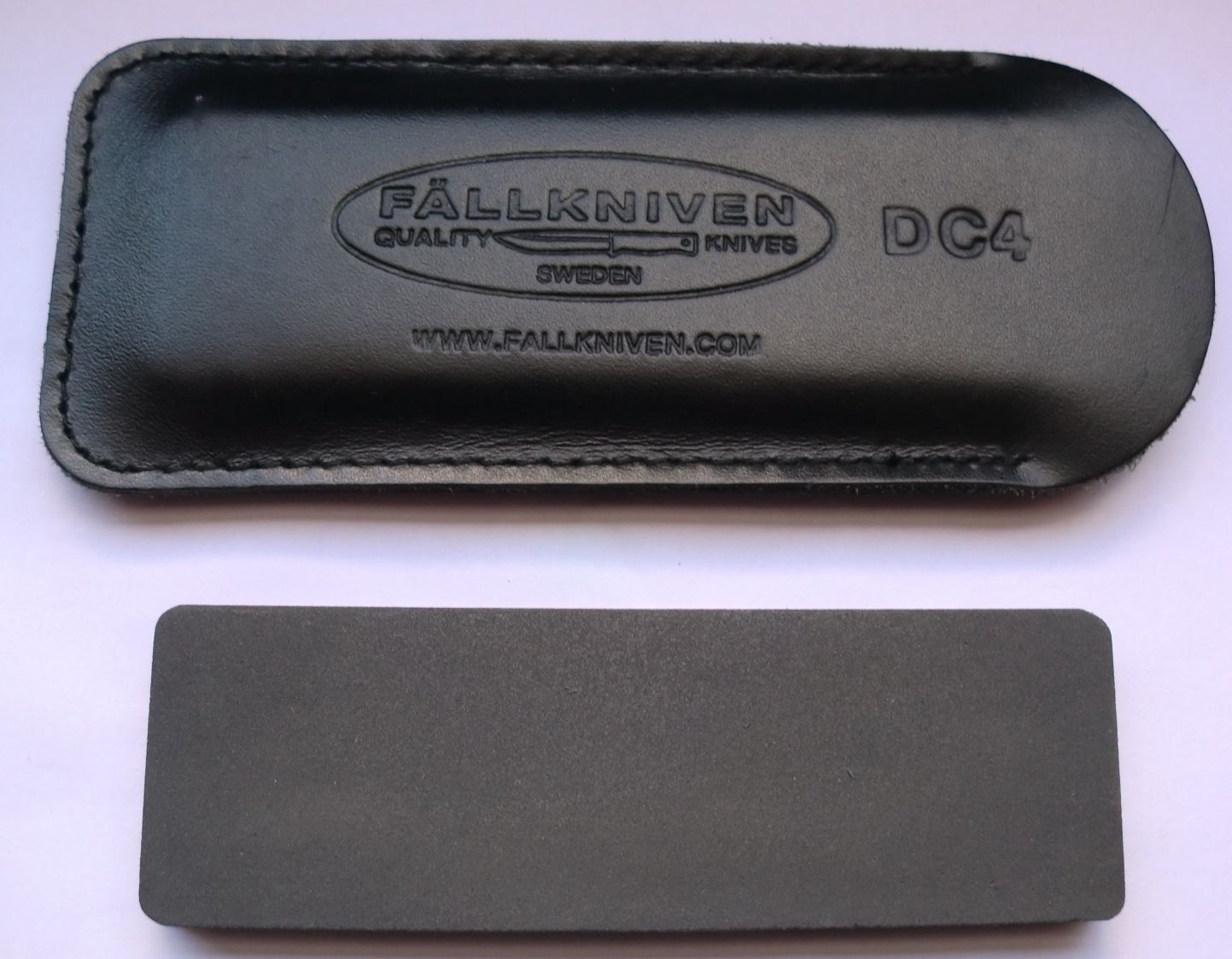It's a shame that Fallkniven does not give an accurate grit for the ceramic side of their DC stones. I searched the forums and did not find an answer, but maybe I did not searched accurately enough (I have the suspicion that I am not very good at that). Sorry, if that question has been already answered.
When the stone was new it was very rough (as described on the packing). Now the ceramic side is much finder and quite smooth, but this took a long time and some lapping on a coarse stone. The surface looks different. I don't have a photo what it was like at the beginning.

Now I can get a shaving sharpness out of that stone.
I also have a Victorinox Dual Knife Sharpener and an EZE-LAP Hone & Stone Super Fine. The first (ceramic pull-through) should be ~1000 FEPA, the last 1.200 ANSI. Both give a sharp edge, but not that sharp than the DC4s ceramic side.
I think the grit is finer than 1000 FEPA (3000 JIS), but is it closer to 3000 or 6000 (unofficial statement from Fallkniven somewhere on the internet)?
What do you think? what are your experiences with the DC4? Or do you even think it is not even that fine?
Is the ceramic only that smooth at the surface (through lapping) and will get rougher when the smooth part wears down through sharpening?
When the stone was new it was very rough (as described on the packing). Now the ceramic side is much finder and quite smooth, but this took a long time and some lapping on a coarse stone. The surface looks different. I don't have a photo what it was like at the beginning.

Now I can get a shaving sharpness out of that stone.
I also have a Victorinox Dual Knife Sharpener and an EZE-LAP Hone & Stone Super Fine. The first (ceramic pull-through) should be ~1000 FEPA, the last 1.200 ANSI. Both give a sharp edge, but not that sharp than the DC4s ceramic side.
I think the grit is finer than 1000 FEPA (3000 JIS), but is it closer to 3000 or 6000 (unofficial statement from Fallkniven somewhere on the internet)?
What do you think? what are your experiences with the DC4? Or do you even think it is not even that fine?
Is the ceramic only that smooth at the surface (through lapping) and will get rougher when the smooth part wears down through sharpening?
Last edited:
